In the first article we dedicated to the Bristol F2.B, we presented the aircraft. Now, it’s time to present some of the aces who piloted this fighter, which is featured in the WW1 Wings of Glory Airplane Packs: the British William Harvey and Dennis Waight, the Australian Eustace Headlam, and the RFC 39 Squadron.
William Harvey & Dennis Waight
During WWI, with the Bristol F2.B, there was a crew who showed their abilities in the skies, becoming real Aces for British Aviation. We are talking about the pilot, William Frederick James Harvey, and his observer, Dennis Edward Francis Waight.
William Frederick James Harvey, born in 1897 in Sussex, was a British flying ace in World War I, credited with twenty-six victories. He was the first recipient of the DFC & Bar and was also awarded the MC.
Harvey served with the Signal Company of the Royal Engineers until he transferred to the RFC in December 1916. In December 1917, he was posted as a pilot to No. 22 Squadron flying Bristol F.2B fighters. He achieved his first air victory on 16 March 1918, when he downed a Pfalz D.III, followed by an Albatros D.V two days later.
With three more kills in March, Harvey established himself as a flying ace. In May 1918, he was promoted to captain and commanded 'B' Flight.
In the last half of May, Harvey, flying with Lt. George Thomson as his flight observer, downed two observation balloons and four German airplanes; on 10 July, they shot down three Fokker Dr.I, while on 20 July they downed other three enemy airplanes. Shortly after this success, Thomson was replaced with Captain Dennis Waight, who remained Harvey's teammate until the end of campaign, becoming one of the most famous crews of WWI. The duo scored 9 kills during the Battle of Amiens in August 1918.
Of the twenty-six victories (comprising 3 balloons, 12 destroyed, 2 shared, and 9 'out of control') credited to Harvey, eighteen were achieved utilizing his front gun, showing his gunning abilities.
After the war, Harvey served as an instructor with 33 TD Squadron of the Army of the Rhine. Upon leaving the RAF he became a farmer. During the Second World War, he was honored as a Member of the Order of the British Empire for his service. When the war ended, he retired to Kent, writing many aviation-related articles and the history of his old RAF Squadron, No. 22, entitled 'Pi in the Sky.'
Colonel Dennis Edward Francis Waight, born in February 1895, was a professional infantryman in the British army. After being decorated for valor while serving as a fusilier early in World War I, he flew in combat as an aerial observer until war's end. No details of his transfer and training are known; however, he was credited with 12 aerial victories, making him a flying ace.
Waight was assigned to 22 Squadron as an observer; he sat in the back seat of a two-seated Bristol F.2B Fighter and manned the rear machine guns to ward off attacks from behind. On 10 July 1918, Waight scored his first victory while piloted by ace T. W. Martin; he downed a German Pfalz D.III fighter over Lille.
Waight would not score again until he was involved in the British offensive at the Battle of Amiens, when he joined William Frederick James Harvey. With his new pilot, Waight shared in the destruction of two Pfalz D.IIIs in a dogfight northeast of Vitry.
On the evening of 11 August, he sent a Fokker D.VII out of control, southeast of Armentières in France for his fourth win. On the 13th, he destroyed a Rumpler and sent its Pfalz D.III escort out of control northwest of Cambrai for victories five and six. The next day, a German two-seater fell from his guns, out of control southwest of Lille. Two days later, Waight destroyed a Pfalz D.III southeast of Lille. On 21 August, the victim was another unidentified German two-seater, sent toward the ground out of control, this time over Ervillers.
The next day, 22 August 1918, the crew of Waight and Harvey scored their last victory together; teamed with other crews from 22 Squadron, they destroyed a Halberstadt reconnaissance two-seater northeast of Bailleul. Waight scored two more victories with other pilots before the war ended.
Eustace Headlam
Another ace piloting the Bristol F2.B was Australian Eustace Headlam. Son of Thomas E. Headlam, Eustace Slade Headlam was a law student living in Hobart when he enlisted in the 3rd Light Horse Regiment, AIF, on 12 April 1915.
After he transferred to the Australian Flying Corps, he served as an observer in Egypt with 67 Squadron in early 1917. He completed pilot training in September 1917 and was posted to 1 Squadron on 2 February 1918.
Flying the Bristol Fighter, he scored five victories by the end of the war. He was discharged from the AIF on 4 March 1919.
He achieved his victories in Middle East skies, victoriously piloting the Bristol F2.B against Albatros D.III, AEG C, and DFW C with three different observers. The Albatros D.III was hit with the help of the observer, Lt. E B S Beaton.
39 RFC
Before the end of the First World War, the Bristol fighter was in service in various theaters of war, including with No 139 in Italy and No 67 (Australian) Squadron in the Middle East. The 39 RFC Squadron, together with the 33, 36, 76 and 141 Squadrons, used Bristol Fighters for home defense duties.
F2.Bs used by home defense units as night fighters were modified in a number of ways. Some were fitted with navigation lights on the lower wing tips and rudders, Holt flare brackets beneath each lower wing tip, and illuminated gun sights.
Other night fighters were fitted with additional forward firing machine guns. One aircraft of No 39 Home Defense Squadron had two Lewis guns fitted over the wing in addition to its normal single Vickers gun and twin Lewis guns for the observer.
Many members of this squadron died during the WWI years piloting the Bristol F2.B, including Canadian Lt. Jack Lionel Boles, British 2nd Lt. Reginald Pym Hitchen Kemp, and South African 2nd Lt. Thomas Bradley Pritchard, who was awarded the Military Cross for attacking (unsuccessfully) Zeppelin L45 on 20 October 1917. Following the attack, he crash landed, cutting his left eye and suffering a concussion, ultimately passing away in November 1917.
Information sources: The Aerodrome - William Harvey and Eustace Headlam, Wikipedia -William Harvey and Dennis Waight, 3 Sea Bees, Cross and Cockade International, A Pilot's War, Adf Serials, Ivy and Martin's Web Page.


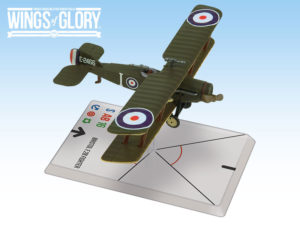
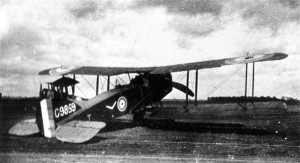
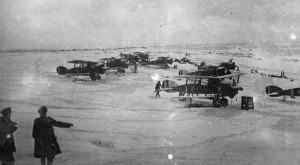
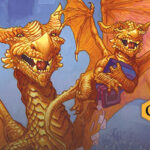
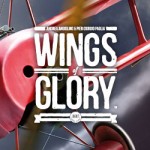






Follow Us on